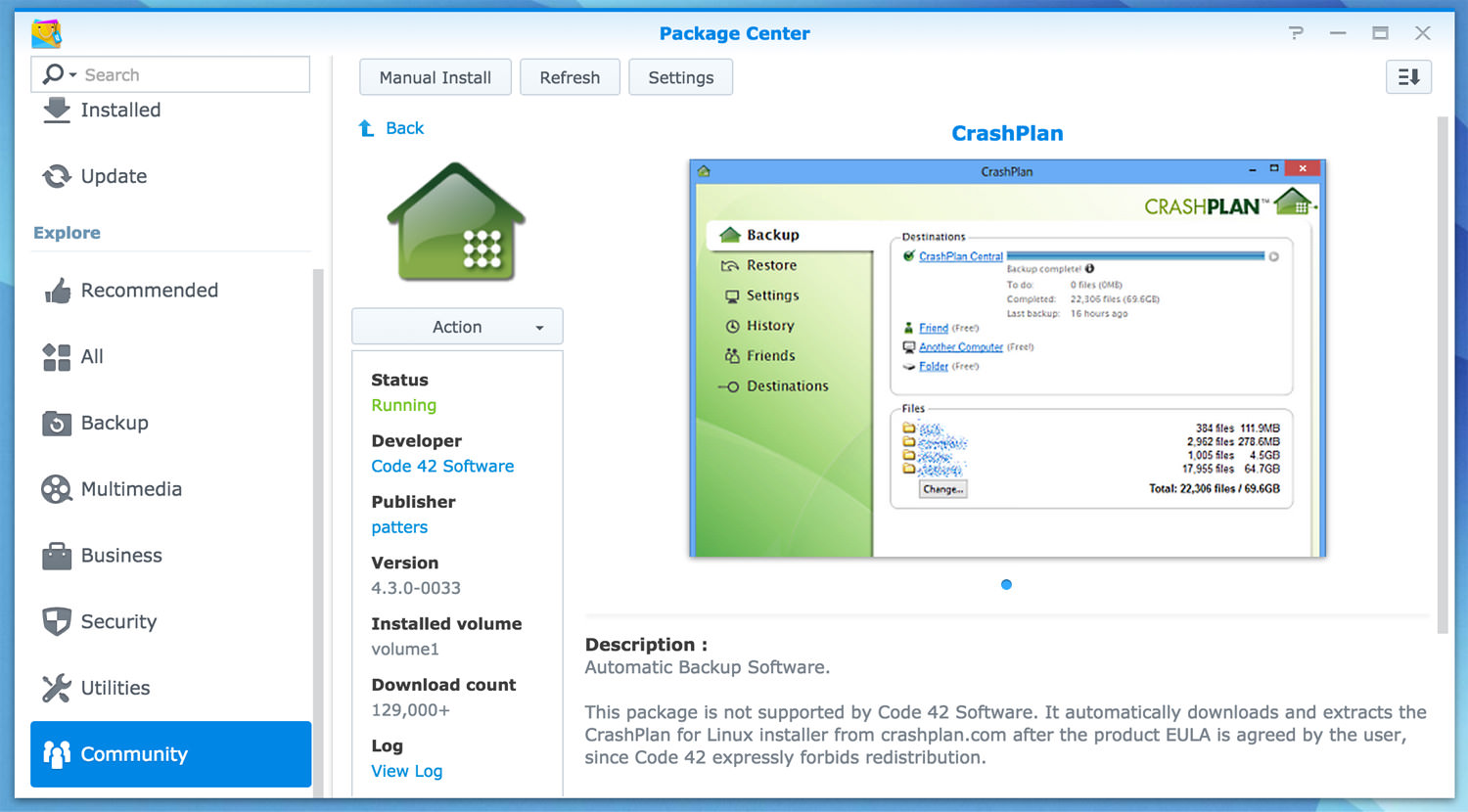
- #Headless crashplan install#
- #Headless crashplan software#
- #Headless crashplan Pc#
- #Headless crashplan windows#
You may also notice that there's already a line similar to the above that starts with '#'. You might find that Notepad doesn't show line breaks properly. Open this file using a decent text editor like Notepad++ and add the following line: Inside, you'll find a folder called "conf" and inside there, a file called "ui.properties". By default, this is in C:\Program Files\CrashPlan.
#Headless crashplan windows#
Open the folder where you installed CrashPlan on your Windows PC. Note that the CrashPlan Engine is unaffected by changes to this text file - it will happily trundle along in the background, backing up files from your Windows PC.
#Headless crashplan Pc#
Annoyingly, if you also have a CrashPlan Engine instance running on your Windows PC then you'll need to add/remove (or comment/uncomment) this line each time you want to switch between them. We're now going to reconfigure the CrashPlan Desktop installation on our Windows PC to access a different port which we'll then redirect to the CrashPlan Engine instance running on our Linux Server. Configure CrashPlan GUI to access a remote CrashPlan Engine If you haven't, then why not go do that now.

#Headless crashplan software#
I'll also assume that you've downloaded and installed the CrashPlan software on your Windows 7 PC. Installationīefore we begin, I'll assume that you've followed my other post that covers installing CrashPlan on a headless Linux Server. In this post, I'll show you how you can use the CrashPlan Desktop running on Windows 7 to manage the CrashPlan Engine running on a separate Linux server. I have a PC running Windows 7 that I use for any serious work and an iPad for casual web browsing etc. Naturally, it doesn't have X Windows installed and is operated as a headless server - much like the type you would deploy to a data centre in a corporate environment. Here at Liquidstate, we have a central file server that runs Linux. UPDATE! - I've found a way to remotely manage CrashPlan without the need for SSH port forwarding.
#Headless crashplan install#
CrashPlan Engine: This is always running from the moment you install CrashPlan and continues to run even if you log out.However, with a little SSH magic, you can easily overcome this limitation.įor the uninitiated, CrashPlan comprises of two components: My only complain is that CrashPlan was built with the assumption that the GUI would reside on the same machine as the backup engine.

If you want to use it to control crashplan remotely over the internet at your own risk, then open the crashplan server port 4243 in your firewall and change the ui.properties file above to use your servers public address.If you've followed my post about backing up your home file server and how I backup my own server, then you'll know I'm a big fan of CrashPlan. NOTE: For security reasons only use this setup to access crashplan locally. That's It, Open CrashPlan on your PC to configure CrashPlan on your server. Crashplan Server 192.168.1.100)ĭo NOT open port 4243 in your firewall (Crashplan's GUI runs on port 4243), though it can be uncommented in the above file. Port 4242 needs to be opened to allow traffic to your CrashPlan server. Open the CrashPlan server port 4242 in your firewall modem etc.

Change the line #serviceHost=127.0.0.1 to include the IP address of your CrashPlan server and remove the #. On windows install CrashPlan and open the file C:\Program Files\CrashPlan\conf\ui.properties. (if crashplan doesn't autostart at boot use cmd: update-rc.d crashplan defaults )ġ0. Save the file and restart the CrashPlan daemon (Ctrl O to save): Search for the “serviceHost” parameter and change it from this:ĩ. Nano -w /usr/local/crashplan/conf/my.service.xml On your Linux server, open the following XML configuration file in your favourite text editor. Would you like to start CrashPlanDesktop? (y/n) Ĩ. Install CrashPlan with the default settings. When the installer asks for java, press Y to accept the installation.Ħ. I agree a CrashPlan plugin would be greatĪnyway this is how I do it for anybody looking to give it go.


 0 kommentar(er)
0 kommentar(er)
